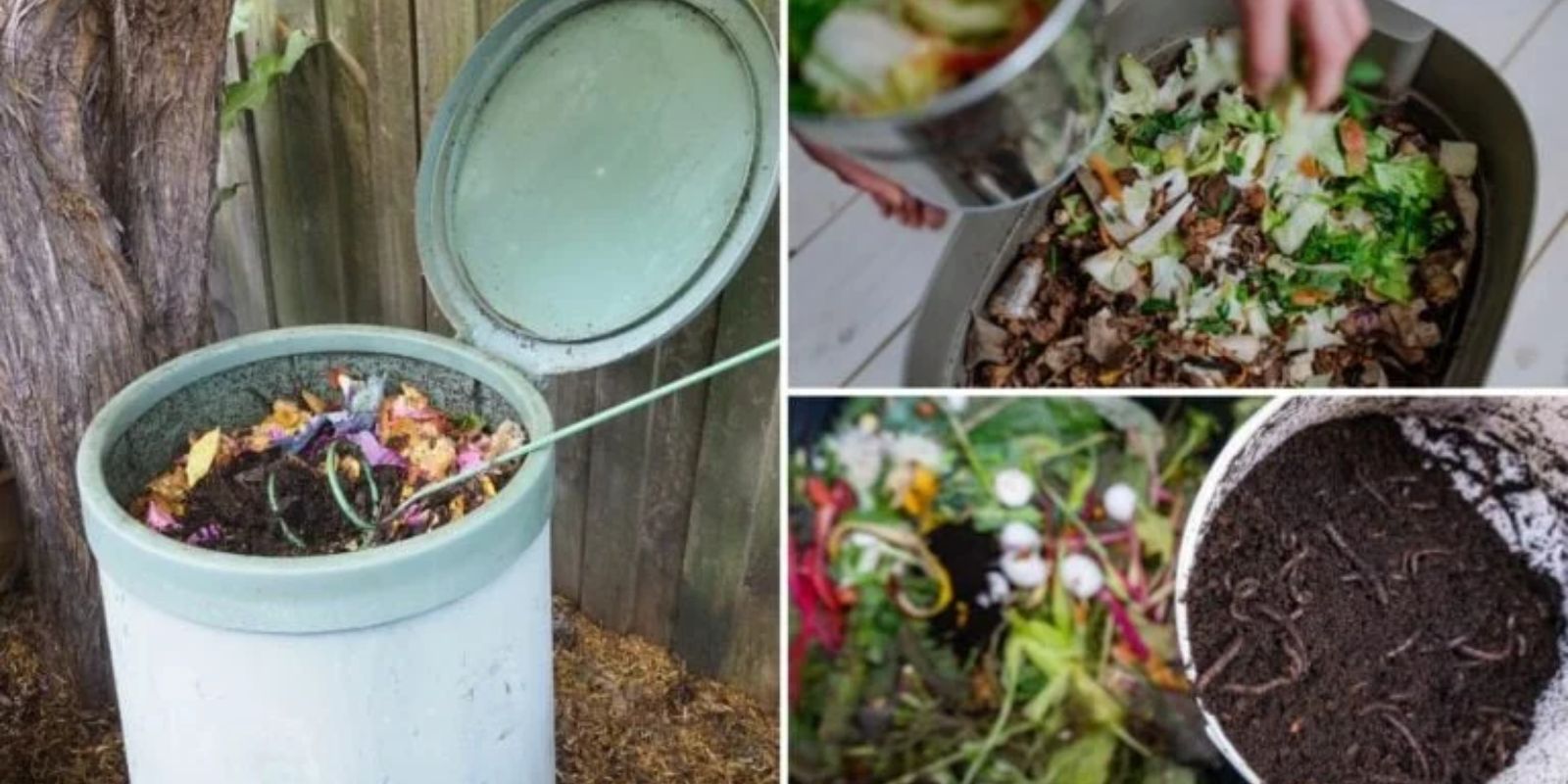Vermicomposting is an eco-friendly and efficient way to recycle kitchen scraps and organic waste into nutrient-rich compost using worms, particularly red wigglers (Eisenia fetida). This method not only helps reduce landfill waste but also enhances your garden’s soil health. However, many beginners make common mistakes that can hinder the success of their vermicomposting efforts. In this article, we will explore five of these mistakes and how to avoid them, ensuring a thriving composting experience.
1. Overfeeding the Worms
Understanding Worm Consumption
One of the most frequent mistakes made by new vermicomposters is overfeeding their worms. While it may seem intuitive to provide a lot of food to speed up the composting process, this can lead to significant problems.
Signs of Overfeeding:
- Unconsumed Food: If you notice food piling up in the bin, it’s a clear indicator that you’re feeding too much.
- Odors: An unpleasant smell often indicates that the food is rotting rather than composting, which can attract pests.
How to Properly Feed Worms
- Start Slow: Begin with small amounts of food. A good rule of thumb is to provide about half a pound of food for each pound of worms every week.
- Monitor Consumption: Check the bin regularly to see how quickly the worms are processing the food. If it’s gone in a few days, you can gradually increase the amount you feed them.
- Chop Food: Cutting food scraps into smaller pieces can help worms consume them more quickly and effectively.
2. Ignoring Moisture Levels
The Importance of Moisture
Worms thrive in a moist environment, but it’s crucial to find the right balance. Too much moisture can create a soggy, anaerobic environment that is detrimental to the worms.
Signs of Improper Moisture Levels:
- Soggy Bedding: If the bedding is overly wet and clumpy, it can lead to poor aeration and oxygen deprivation.
- Dry Bedding: If the bedding is dry, worms may struggle to move and consume food.
How to Maintain Proper Moisture
- Feel the Bedding: The bedding should feel like a wrung-out sponge—damp but not dripping wet.
- Add Water Gradually: If the bedding is too dry, lightly mist it with water. If it’s too wet, add dry bedding materials such as shredded cardboard or paper.
- Check Frequently: Regularly inspect the moisture levels, especially in hot or humid conditions.
3. Adding the Wrong Foods
Understanding What Worms Can Eat
Another common mistake is feeding worms inappropriate food items. Not all kitchen scraps are suitable for vermicomposting.
Foods to Avoid:
- Citrus Fruits: High acidity can harm worms and alter the pH of the compost.
- Meat and Dairy: These can attract pests and create unpleasant odors.
- Oils and Fats: These can also lead to a rancid environment that is unhealthy for worms.
Best Foods for Worms
- Vegetable Scraps: Carrots, lettuce, and broccoli are excellent options.
- Fruits: Banana peels, apple cores, and other non-citrus fruits are highly nutritious.
- Coffee Grounds and Filters: These are great sources of nitrogen.
- Eggshells: Crushed eggshells provide calcium, which is beneficial for the worms.
4. Lack of Proper Aeration
The Role of Aeration in Vermicomposting
Worms need oxygen to thrive, and a lack of aeration can lead to anaerobic conditions, causing foul odors and an unhealthy environment for the worms.
Signs of Poor Aeration:
- Odors: A strong smell can indicate that the compost is not aerated properly.
- Suffocated Worms: Worms may congregate at the surface, attempting to escape an anaerobic environment.
How to Improve Aeration
- Turn the Bedding: Gently turning or mixing the bedding can introduce oxygen. Use a hand trowel or your hands to avoid harming the worms.
- Use Coarse Materials: Incorporate materials like shredded cardboard, straw, or dry leaves into the bin. These not only provide carbon but also create air pockets for better ventilation.
- Avoid Overpacking: Ensure the bin is not too full. Worms need space to move and breathe.
5. Wrong Bedding Material
Choosing the Right Bedding
The bedding you use is crucial to the success of your vermicomposting system. Many beginners make the mistake of using unsuitable materials that can harm the worms or hinder the composting process.
Bedding Materials to Avoid:
- Glossy Paper: This contains harmful chemicals and inks.
- Treated Wood Shavings: These can introduce toxins harmful to worms.
Ideal Bedding Options
- Shredded Newspaper: Non-glossy, shredded newspaper is an excellent source of carbon.
- Coconut Coir: This sustainable option retains moisture well and provides a good habitat for worms.
- Cardboard: Shredded cardboard can also be used, but ensure it’s free of tape and labels.
Conclusion
Vermicomposting is a rewarding endeavor that can significantly benefit your garden and reduce waste. By avoiding these common mistakes—overfeeding, ignoring moisture levels, adding the wrong foods, lack of aeration, and using unsuitable bedding materials—you can create a thriving ecosystem for your worms. With a little patience and care, you’ll be well on your way to producing high-quality compost that nourishes your plants and contributes to a healthier environment.
Get Started with Vermicomposting!
If you’re eager to start your own vermicomposting journey, remember to share your experiences and tips with fellow gardeners. Let’s build a community of sustainable practices and green living!
🌱 What has been your biggest challenge in vermicomposting? Share below! 🌿

